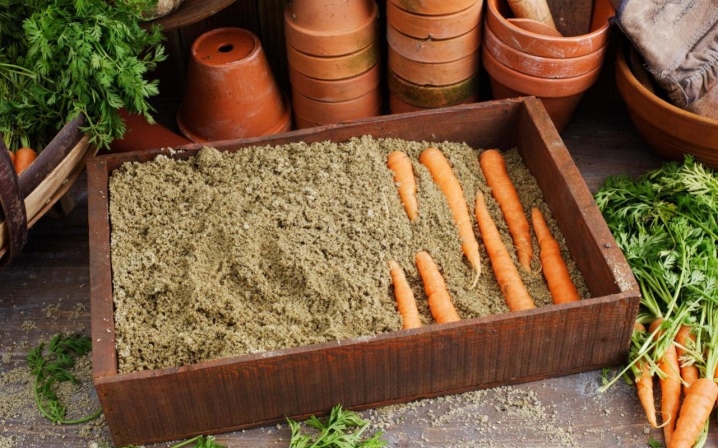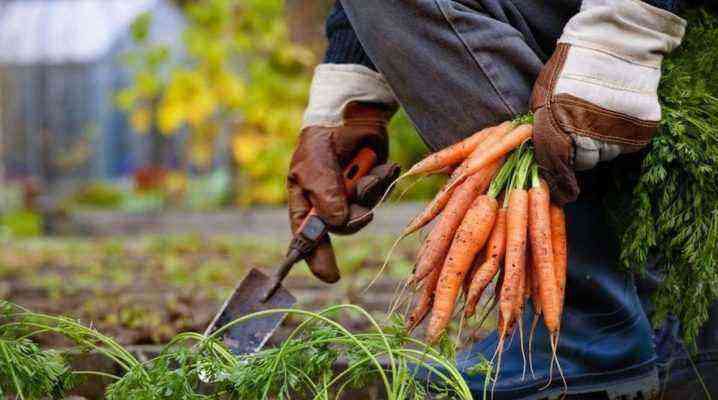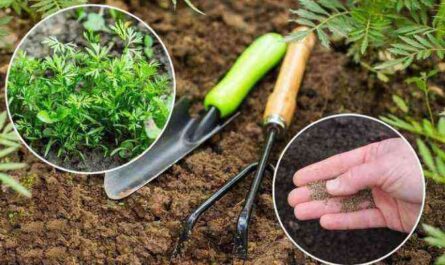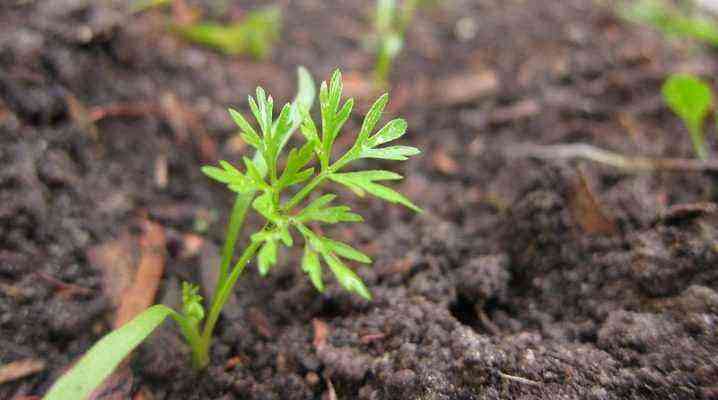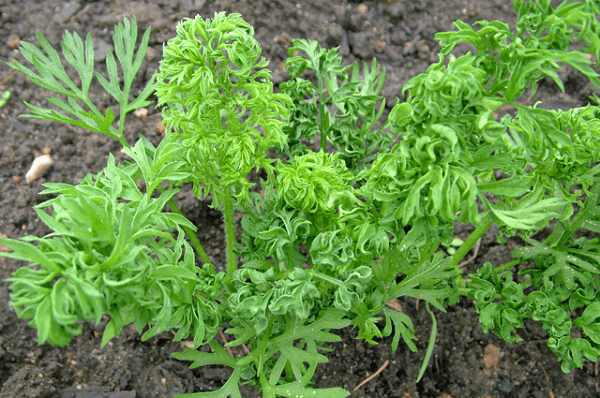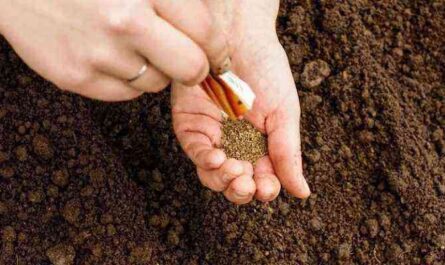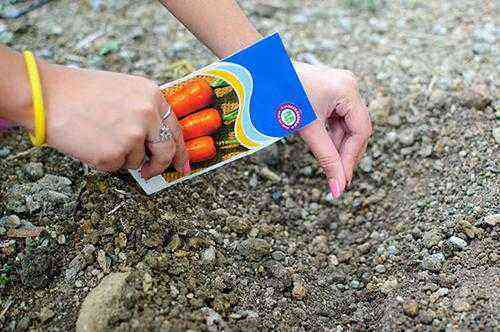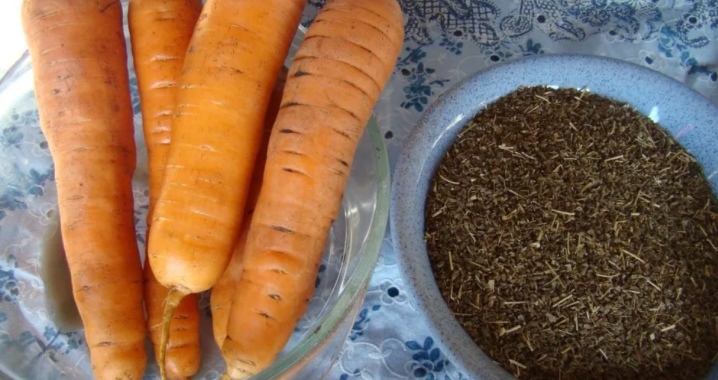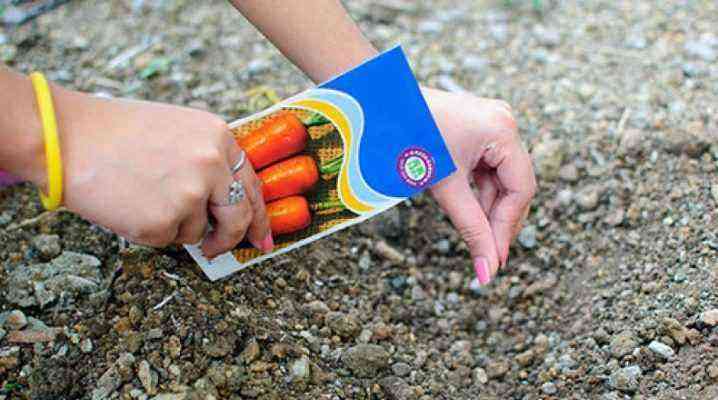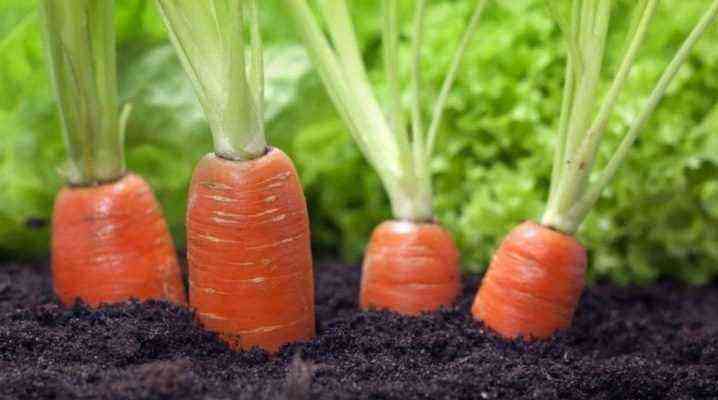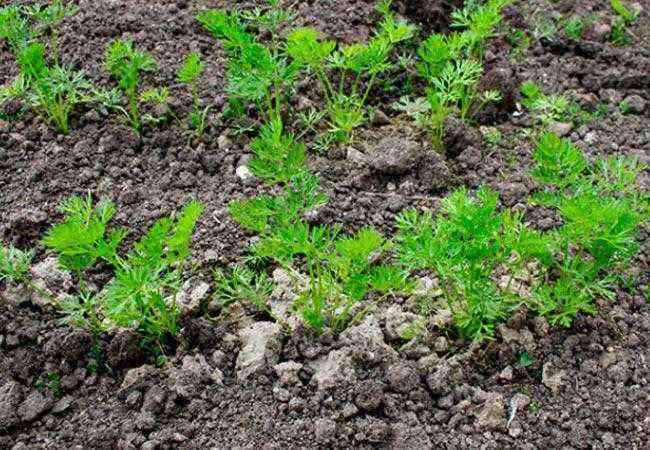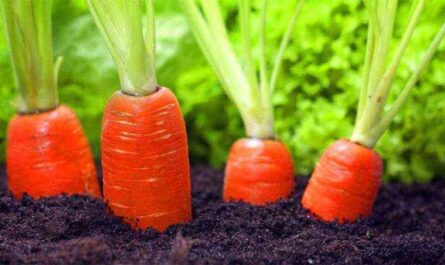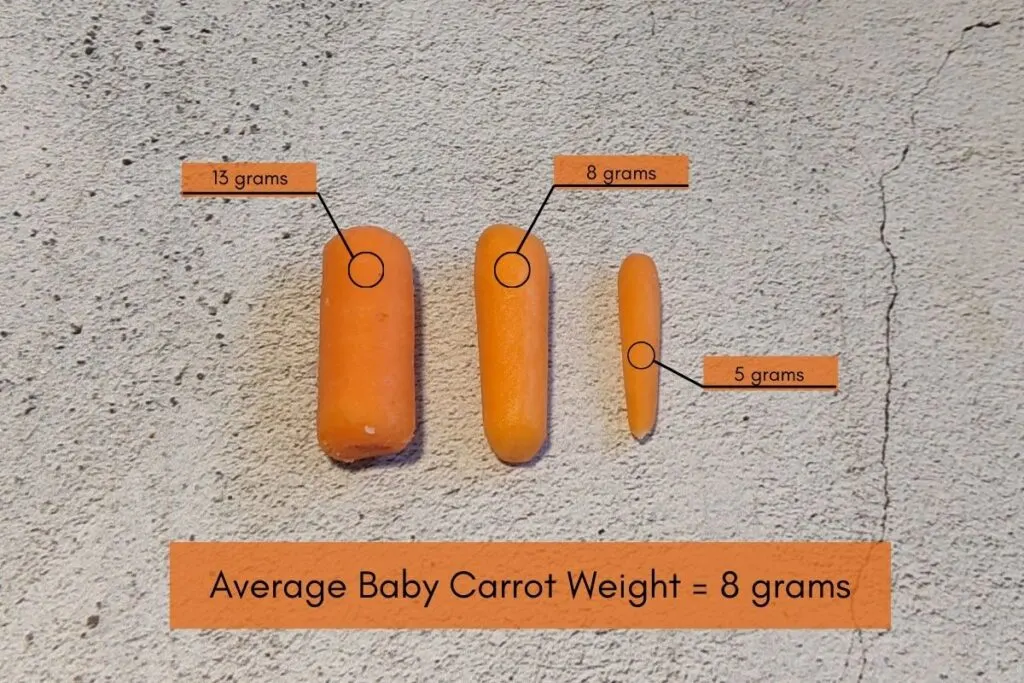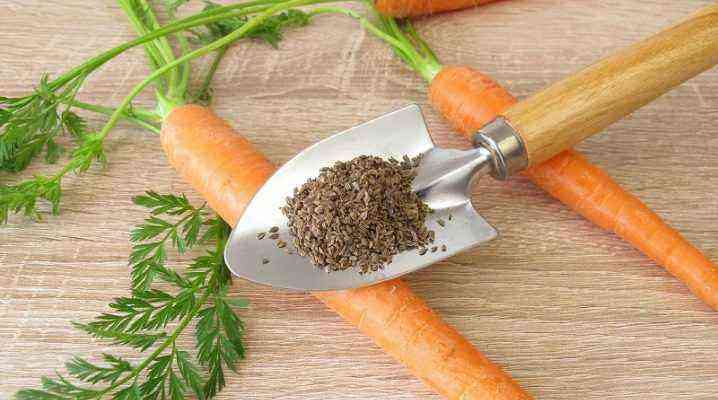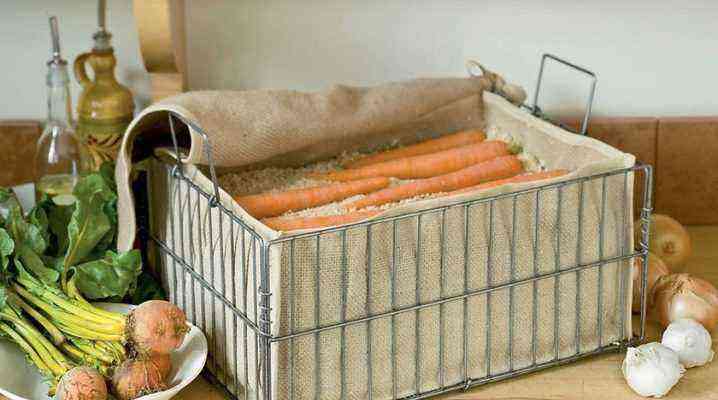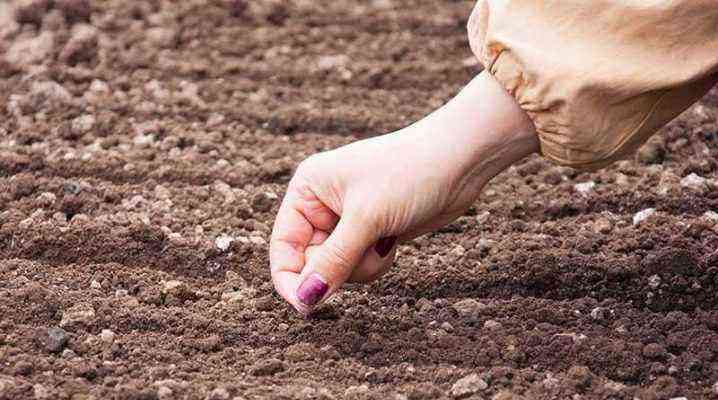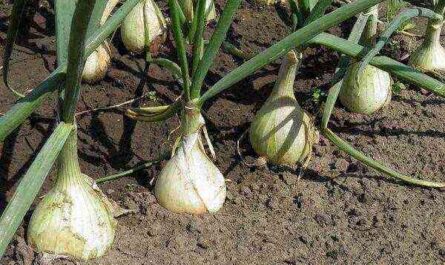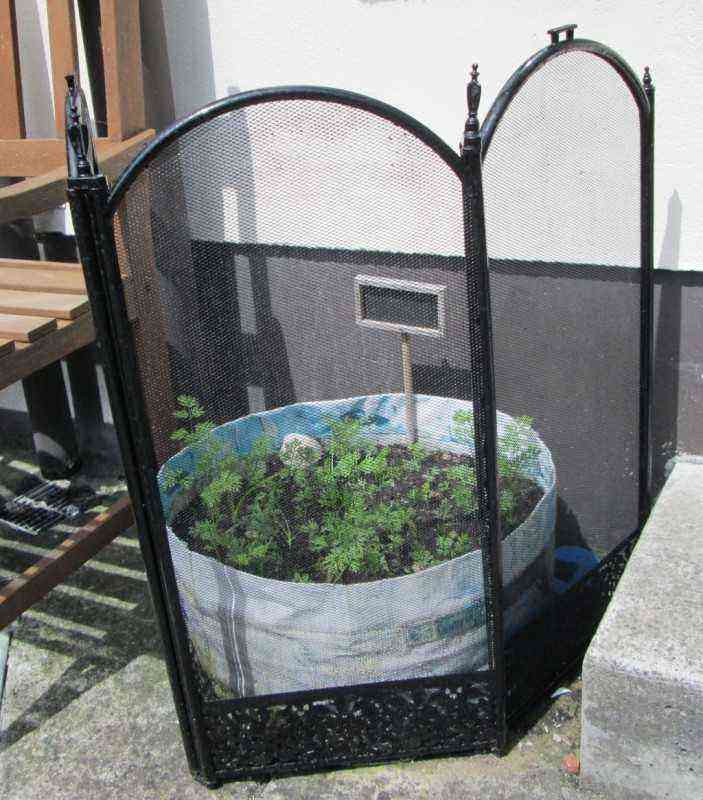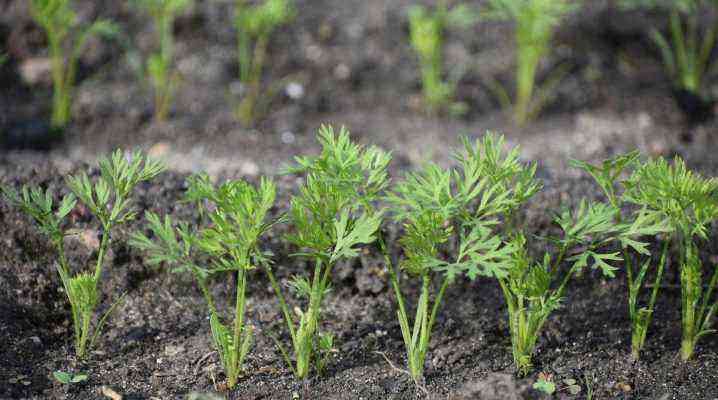
To get a rich harvest of juicy and sweet carrots, you need to know some of the features of its agricultural technology. There is an opinion that growing carrots is easy and simple. However, this is not the case – the vegetable needs to be properly looked after, it needs the preparation of the beds, watering, fertilizing and protection from pests.
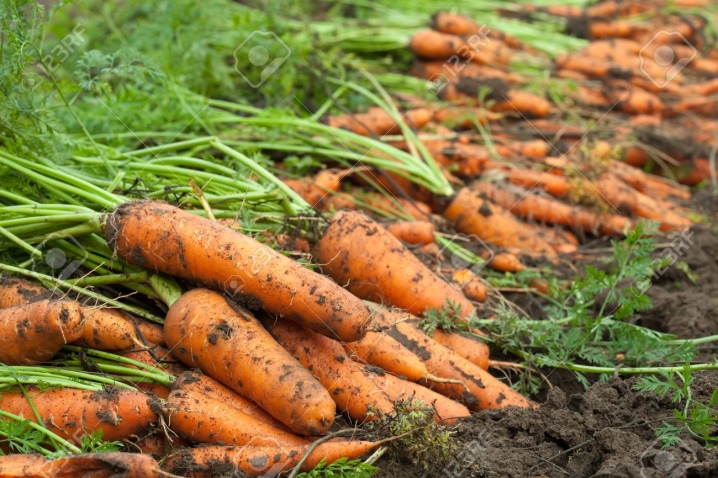
Site Selection
You can plant carrots in the country, in the greenhouse and even on the balcony. The success of growing carrots largely depends on the choice of a place for planting this crop. For the full growth and development of this root crop, a site well lit by the sun is required. If there is not enough light, the tops will become stunted, and the roots will be thin and tasteless. It is advisable to choose a place where the sun shines on the garden during the whole daylight hours.
Neutral or slightly acidic lands are optimal for this crop – alkaline and overly acidic lands are unsuitable for it. The highest yield can be obtained on loams with a high content of sand, as well as on sandy loamy lands. On dense loams, the fruits grow small, moreover, in the process of transportation and storage, they begin to rot.
The soil must certainly be well-drained and moisture-intensive.
In conditions of high humidity, accompanied by oxygen deficiency, the risk of fungal and bacterial infections increases many times over. It is also not recommended to plant carrots in areas with a large slope.
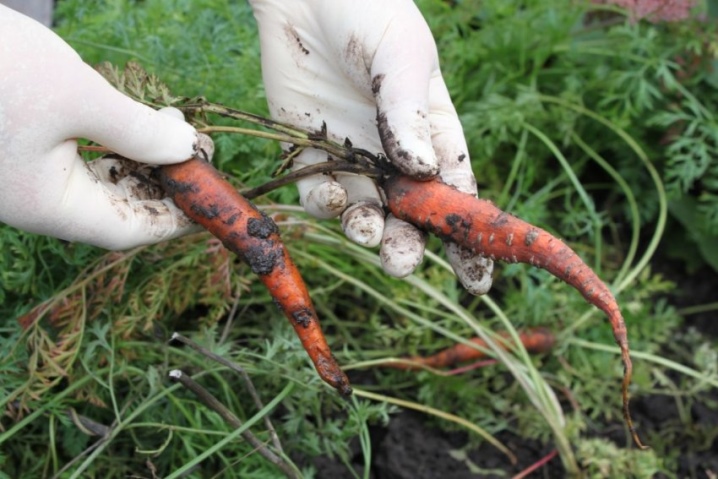
To create optimal conditions for the development and growth of the root crop, it is better to prepare the beds in advance. So, if you plan to plant carrots in the spring, then in the fall you need to clean up the garbage, pull out weeds and dig the soil. It should be deep – at least one and a half bayonets of a shovel, this will allow the root crops to actively grow in depth. In addition, thorough plowing greatly simplifies harvesting, since pulling vegetables out of light soil will be easier and faster.
Additionally, peat or sand is added to the ground at the rate of 1 kg / sq. m of sown area. It is advisable to add some manure or humus there. Organics will also be required for infertile substrates. If this was not done in the autumn, then top dressing can be applied in the spring before planting the seeds. If the soil is too acidic, then it is necessary to add chalk or lime to it in the proportion of 1 glass per square meter.
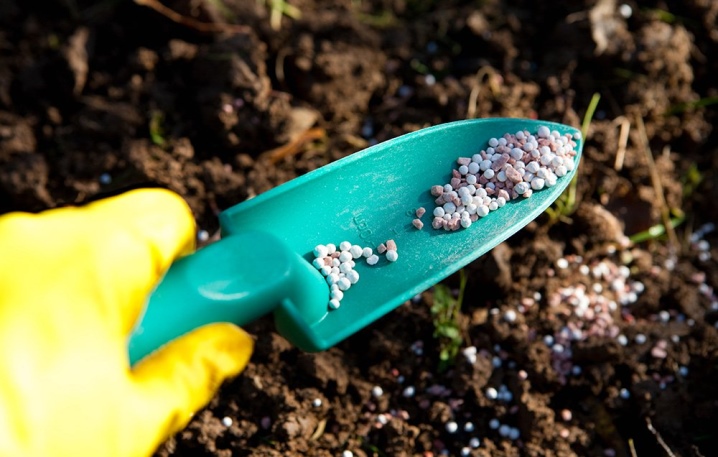
Landing
Let’s take a closer look at the step-by-step instructions for planting carrots.
Deadlines
There are two types of crops – autumn and spring, the latter is preferable. Usually, carrots are sown very first in the southern regions, where all the conditions necessary for the growth and development of root crops are created already in late March – early April. In the central part of our country, the first half of May is considered the best time for planting, in the northern – planting is best done in late spring or early summer. In any case, you need to focus on the weather. It is important that the average temperature in the daytime stays consistently above +15 degrees, and at night it does not fall below +5. Of course, return frosts will not kill young root crops. Nevertheless, they provoke an increased growth of flower arrows, thereby worsening the keeping quality of root crops; they will no longer be suitable for long-term storage.
It is better to plant carrots for storage in the second half of May, when the air temperature will stably stay at around 18-20 degrees, and night frosts will completely bypass. Experienced gardeners plant such root crops in the second half of June. By the way, it has been noticed that when planting late, this plant is almost not damaged by a carrot fly.
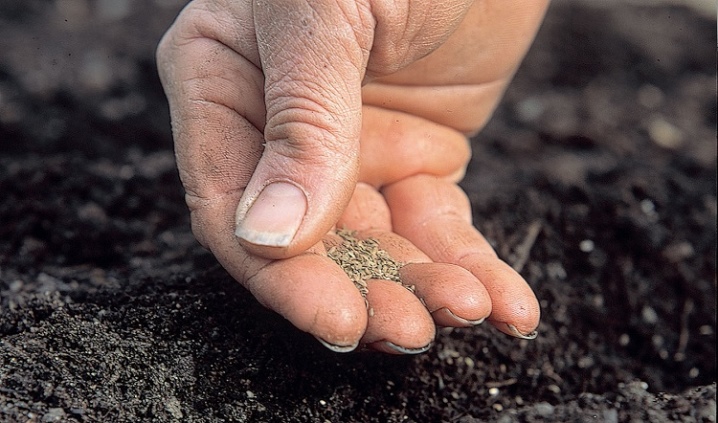
Autumn planting of carrots is resorted to only in those regions where the temperature in winter does not fall below -15 degrees, and snow falls abundantly. Otherwise, even under a thick layer of mulch, the seedlings will die. At the same time, it is important to choose the right weather when the heat has already left, and the temperature will approach zero.
Such carrots yield a crop 2 weeks earlier than planted in May. In addition, the root crops themselves are much larger and juicier. Keep in mind that only early varieties are sown in autumn. For several winter months in the ground, the seedlings are hardened and with the advent of spring they can withstand any weather surprises.
Tip: when planting in the fall, it is best to plant the seeds on a high bed, otherwise in the spring they can be washed away by melt water.
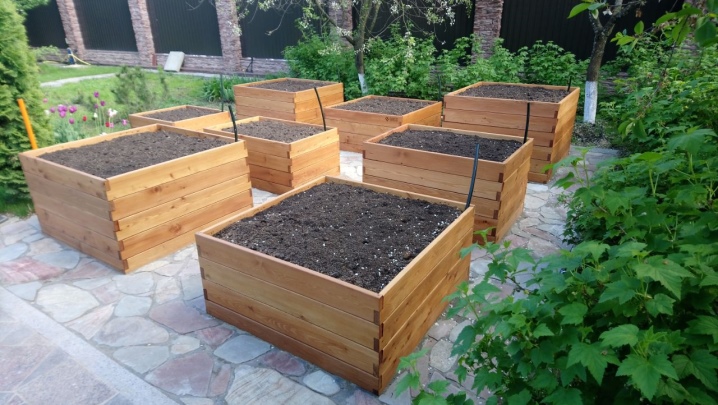
Carrots are among the slow-growing vegetable crops. It happens that the seeds sit in the ground for up to 2-3 weeks before the first shoots appear. This is due to the fact that their shell contains a high concentration of essential oils, which delay the ingress of moisture inside, and germination is repeatedly delayed. To improve germination, the seed must be subjected to special preparation before being placed in the ground, it includes several main stages.
- Germination test. Seeds are placed in saline for a quarter of an hour. Those that float to the surface are empty, they will not sprout. Therefore, you can safely reject them.
- Heat treatment. Viable seeds are soaked in warm water heated to 50-65 degrees, and after half an hour for 2-3 minutes they are placed in cold water. Then the seedlings are again soaked in warm water, the manipulations are repeated three times. Such preparation softens the shell and thereby improves germination.
- Activation. It involves soaking the seed in solutions “Zircon” or “Epin”.
This treatment greatly increases germination and strengthens the immunity of the plant.
- disinfection. When using seeds from your garden, or purchased from private traders, they must be disinfected before planting. To do this, use a weakly concentrated solution of potassium permanganate or boric acid. Seedlings are treated for 5-10 minutes, after which they are dried and placed in open ground. When using store seeds, this measure is not necessary, because the antiseptic treatment was carried out in preparation for the sale.
Pre-soaking helps to increase germination. To do this, the seeds are laid out on a moistened canvas, covered from above, sprayed from a spray bottle, and kept for several days at a temperature of 25-26 degrees. At this time, you need to make sure that the matter does not dry out. Usually within 5-7 days the seedlings swell, and you can move them into the ground. It is important to prevent germination, as carrot sprouts are very fragile and can be damaged during transplantation.
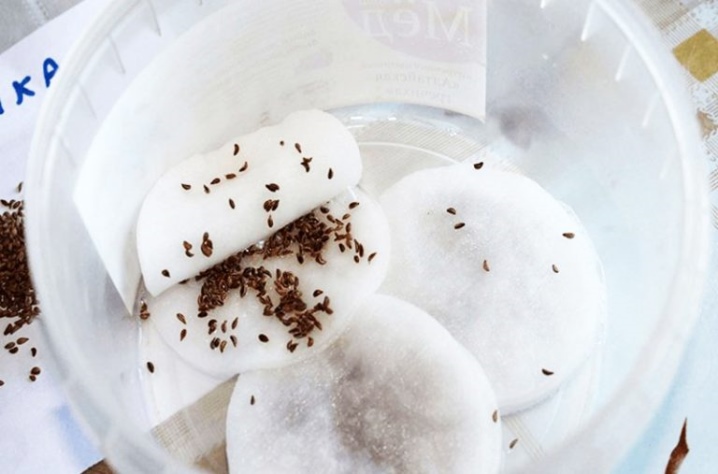
Experienced gardeners often resort to “old-fashioned” methods – for example, grind seeds with sand, or resort to bubbling. Most often used instillation. To do this, the seeds are placed in a linen bag and in early spring, when the snow melts, they are added dropwise to a depth of 15-20 cm. At this time, the earth is already quite moist, but not yet warmed up.
In this form, the seed material is stored for 10-14 days.. This time is enough for the seeds to harden, saturate with melt water and swell.
Before planting, the bag is taken to the ground, dried thoroughly in a natural way and planted in open ground.
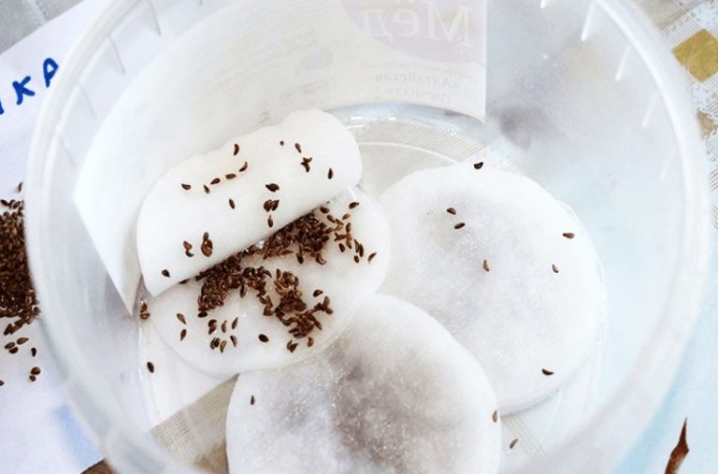
Sowing
There are several ways to plant carrots.
- By hand by eye. To do this, grooves 1,5-3 cm deep are formed in the garden, watered, seedlings are placed in them. Then sprinkle with earth, and moisten again. After the emergence of seedlings, it is necessary to thin out the bed, leaving only the strongest and healthiest sprouts.
- With the help of a paste. A paste is prepared from starch or flour and applied to toilet paper in drops in 2-3 cm increments. A couple of seeds are placed in each and dried. Prepared tapes are placed in pre-moistened grooves, sprinkled with soil and carefully watered by drip.
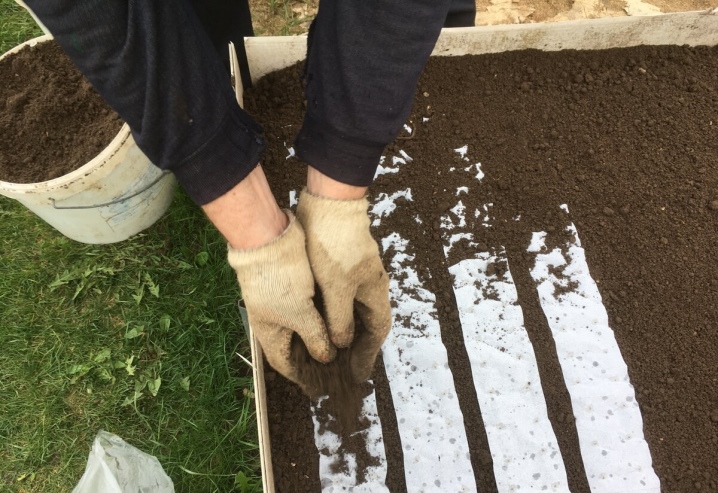
Alternatively, you can use a plastic bottle with a dispenser. In this case, the seedlings fall asleep in a container and, as it were, water the garden.
Another method suggests preparing jelly at the rate of 2 tbsp. l. starch per 1 liter. water. Seeds are added to this composition, stirred and poured into a bottle. A hole is formed in the cork and a tube is inserted into it, which acts as a dispenser. The seed material is squeezed into the prepared bed in increments of 3-5 cm.
Another efficient way is to soaking seeds a week before sowing in gauze for 30-40 minutes. After that, the seedlings are washed and buried in the ground for 2-3 days to weather all the essential oils that prevent germination. Prepared seeds are dug up, carefully covered with starch, tooth powder or flour so that they do not stick to hands, and evenly planted in prepared grooves.
Techniques for sowing carrots in egg cassettes and granules have become widespread.


Watering
Carrots, like any other root crop, require regular watering. Irrigation is carried out at least once every 3-5 days, depending on the weather. The volume of moisture should be such as to completely moisten the ground to the depth of a growing root crop. In the case of young sprouts, this is about 7-10 cm, after growing up – 25-30 cm. On average, in dry weather, moderate watering is first performed at the rate of 3 liters per square meter, and the next day more abundant irrigation is allowed at the rate of 5- 10 l/sq. m of landing area.
Important: you need to keep in mind that excess water, as well as lack of moisture, can cause a decrease in yield.. Under these conditions, the fruits become lethargic and acquire a bitter taste, from abundant moisture, the carrots become cracked.
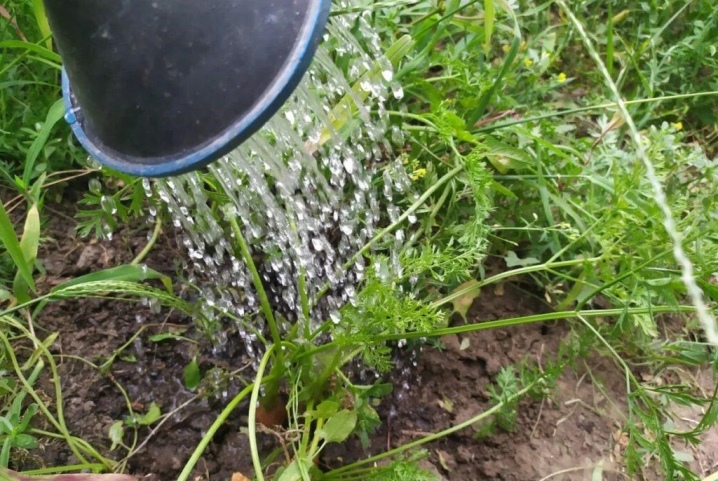
Thinning
If the carrot seeds were planted densely without any periodicity, then in this case special attention should be paid to thinning the plantings. The first time this work is done at the stage of two permanent leaves – only the strongest seedlings are left in increments of 2-3 cm. Repeated thinning is carried out when the third leaf appears, at this moment the distance is increased to 5-6 cm. in this case, the roots become rough.
It is very important to weed the beds, as weeds can negatively affect the germination, growth and development of the root crop. At the first appearance of weeds in the garden, they should be removed along with the roots. For carrot seedlings, hard ground and a crust formed after watering are detrimental.
That is why throughout the growing season it is necessary to loosen the beds – only in a fluffy and light substrate can beautiful and even carrots grow.

Feeding
A couple of times a season, carrots need to be fed with useful micro and macro elements. The first time this is done 3 weeks after the appearance of the first shoots. The second time was a month later. During this period, the following compositions give a good effect:
nitroammophoska – at the rate of 1 tbsp. l. on a bucket of water;
wood ash – 2 glasses per bucket of water;
urea complex, superphosphate and potassium sulfur, taken in 2 tbsp. l. and dissolved in a bucket of water.
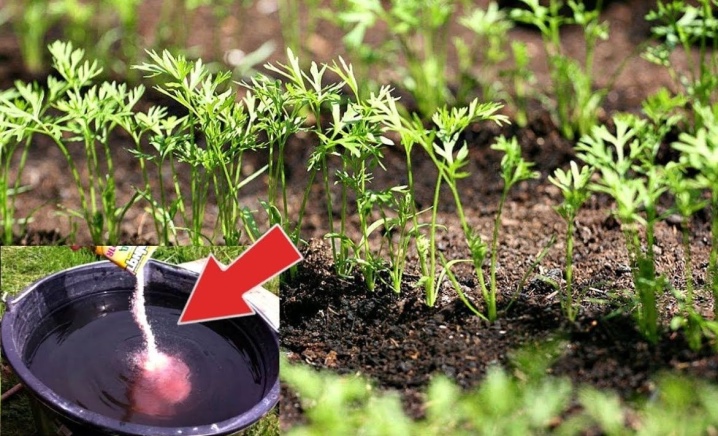
Treatment against pests and diseases
The main pests of carrots are aphids and carrot flies. This pest lays in the ground next to a growing vegetable. As soon as larvae appear from them, they begin to gnaw small passages in the root crop. When the tops are damaged, the tops begin to curl, and the roots crack, become tasteless and unsuitable for consumption. In addition, they are stored for a very short time.
To prevent the appearance of a fly it is very important to pay attention to the observance of sowing technology, to maintain optimal soil moisture – Excess moisture dramatically increases the risk of pests. You can scare away an insect with the help of pungent-smelling compounds, for example, sprinkle pepper with mustard between the rows, or plant marigolds.
If it was not possible to avoid the appearance of pests, you need to use special preparations “Iskra”, “Alatar” or “Inta-Vir”.


Carrots often fall prey to rots of all kinds – white, black, gray and dry. The first sign is the yellowing of the tops, if you dig up such root crops, you can see dark spots on them. During storage, such carrots quickly rot.
The cause of the disease is improper care. To prevent infection, attention should be paid to pre-sowing disinfection of seeds, improve the structure and composition of the soil by fertilizing, and remove weeds in a timely manner. Damaged root crops should be removed and disposed of, healthy ones should be treated with fungicides for prevention.
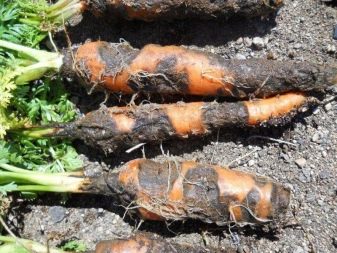

Common mistakes
It is believed that carrots are an unpretentious crop. However, many beginner gardeners often make mistakes. Their result is a deterioration in the taste characteristics of fruits, keeping quality and overall yield. Violation of agricultural technology leads to the fact that the roots become wormy, clumsy, horned, small, crooked, cracks appear on the surface, and the core turns white.
Let’s list the most common mistakes.
- Use of old seeds. The viability of the seed material of carrots lasts no more than 4 years. After that, it is impossible to achieve germination, even if you resort to treatment with growth stimulants and other methods of activation.
- No loosening. The next day after watering, the earth must certainly be loosened, otherwise the growing root crops will simply suffocate.
- Wrong predecessors. Best of all, carrots grow and develop after cereals, onions and garlic, cucumbers, as well as tomatoes and potatoes. But planting it after umbrella plants, such as parsley, dill and fennel, is not recommended.
- Neighborhood. Particular attention should be paid to neighbors. It has been noticed that if radishes, tomatoes or peas are grown near the carrot beds, the yield of root crops increases many times.
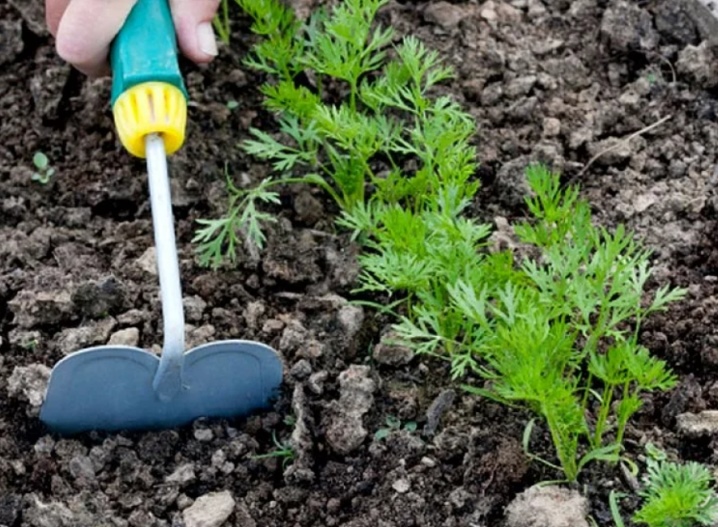
It is not recommended to plant carrots in the same area for several years in a row. It is necessary to return it to its original place no earlier than after 3-4 seasons.
Repeated cultivation on the same bed leads to a decrease in yield, a deterioration in the marketable and taste characteristics of the fruit. In addition, under these conditions, the culture is often affected by carrot flies, nematodes and other pests.
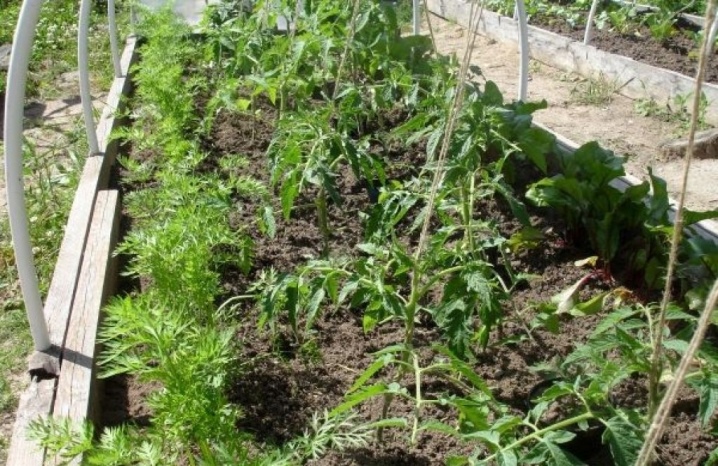
Useful Tips
And in conclusion, we will give some recommendations for harvesting. Most often, carrots are harvested in autumn. If the weather is rainy, then you need to dig it out immediately so that the roots do not rot. But if it is dry outside, then vegetables can be kept in the ground until frost.
It is best to dig up root vegetables on a clear day.. They do this with a pitchfork; when using a shovel, there is a high risk of damage to the vegetable. Then all the adhering earth is removed, the tops are cut off and dried naturally.
Store the crop in a cellar or other dark room with a temperature not higher than +4 degrees. It is desirable that the humidity is high. To improve keeping quality, carrots in containers must be sprinkled with sawdust or river sand.
